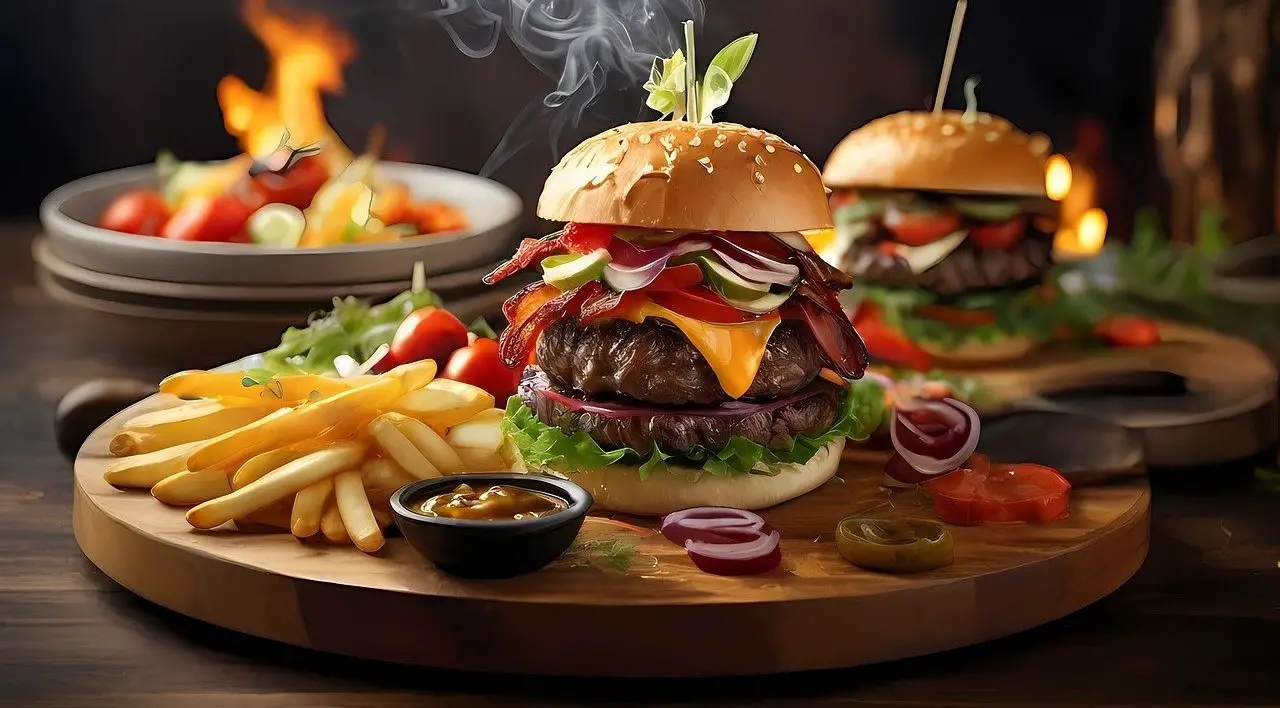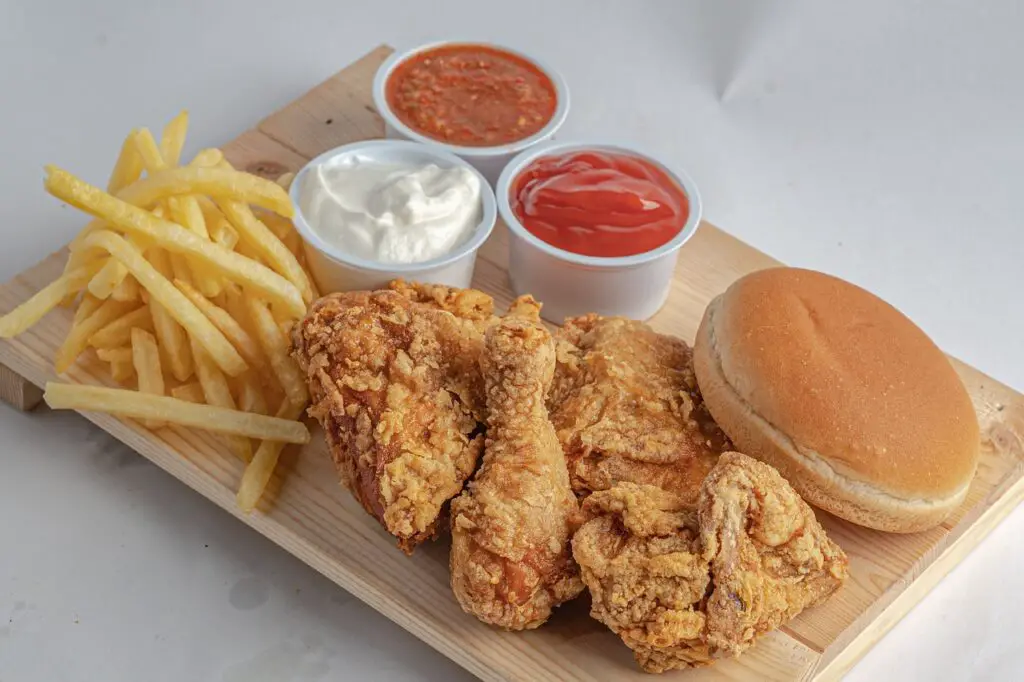
Nestled in the heart of America’s dairyland, Wisconsin offers a culinary experience as rich in tradition as it is in flavor. In every dish—from the crispy, golden cheese curds to the indulgently savory butter burgers—there is a story of local farmers, time-honored recipes, and a community that treasures its heritage. For travelers planning to explore these tastes, a dedicated personal travel planner can help you craft the perfect culinary itinerary.
Wisconsin’s Must-Try Dishes speak to both residents and visitors alike, inviting everyone to savor a blend of rustic charm and innovative tastes that have evolved over generations. If you’re new to this journey, check out some practical travel tips to ensure a smooth trip through bustling farmers’ markets, quaint family-run diners, and lively local food festivals.
Every bite is a celebration of the region’s bountiful ingredients and culinary ingenuity. Venture beyond the plate and discover how local culture and sustainability have shaped recipes treasured across the state. Our detailed exploration of Wisconsin’s culinary gems will leave you inspired to sample every local delight. Whether you’re planning your first visit or returning as a seasoned local foodie, let this guide be your roadmap to unforgettable flavors and memorable experiences. Grab your Nearest Restaurant to You tool and embark on a gastronomic adventure that transcends simple dining—a journey rooted in community, quality, and the time-cultivated art of food.
Table of Contents
ToggleThe Rich Culinary Heritage of Wisconsin

Wisconsin’s culinary journey begins on its sprawling dairy farms and vegetable patches, where fresh, local ingredients lay the foundation for every memorable dish. Generations of family farmers and artisan producers have passed down secrets and traditions that celebrate the bounty of the land. This connection between the farm and table is not only a way of life—it’s a cherished cultural legacy found throughout the state and the entire Midwest USA.
Farm Fresh to Table: A Culinary Tradition
In Wisconsin, the farm-to-table philosophy isn’t a recent trend; it’s a way of living that has sustained communities for decades. Farmers’ markets offer an impressive array of freshly harvested fruits, vegetables, dairy products, and artisanal goods. Here, you can speak directly with the growers and producers who nurture these ingredients with such care that each dish bursts with flavor. Whether you’re savoring carefully churned butter or biting into the crispest vegetable, this commitment to freshness helps every recipe maintain its authentic, rich taste. The integrity of these ingredients, nurtured on family farms and celebrated every harvest, ensures that the culinary legacy of Wisconsin remains both innovative and soulfully traditional.
Cultural Influences on Wisconsin’s Cuisine
Waves of immigrants have blended their native flavors with local traditions, resulting in a culinary tapestry that is as diverse as it is delicious. German, Polish, and Scandinavian influences mingle with indigenous Midwestern practices, producing a mosaic of hearty stews, robust sausages, and delicately spiced pastries. These interwoven traditions continue to inform the way local chefs reimagine classics while honoring the recipes that made them famous. As you dig into each dish, you taste not only the excellent ingredients but also the stories of many cultures converging in one special place.
Wisconsin’s Must-Try Dishes: A Culinary Exploration

Wisconsin’s culinary identity is showcased in an array of dishes that highlight both simplicity and creativity. Each plate tells a story—a fusion of flavors, textures, and traditions that create an irresistible invitation to dine. Let’s take a closer look at some iconic dishes that stand as a testament to the state’s vibrant food heritage.
Wisconsin Cheese Curds: The Iconic Snack
Few foods capture the playful spirit of Wisconsin like the humble cheese curd. Produced from the state’s renowned dairy, these bite-sized morsels are celebrated for their fresh, squeaky texture and perfect balance of crispy exteriors with tender interiors. Often enjoyed hot and lightly salted, cheese curds can also be elevated into a decadent deep-fried treat commonly served at local fairs and sporting events. Next time you’re on a food tour, use the Nearest Restaurant to You tool to find a nearby spot offering this iconic snack and savor the unique flavor that defines Wisconsin’s dairy expertise.
Bratwurst and Beyond: Savory Meats
Wisconsin’s culinary landscape shines in its celebration of savory meats, with bratwurst taking center stage. Grilled to perfection, this hearty sausage is marked by a blend of herbs and spices that bolster the natural juiciness of the meat. Enjoyed at summer barbecues or local festivals, bratwurst is more than a meal—it’s a cultural institution steeped in tradition. For visitors journeying from nearby neighborhoods or even cities like Chicago, options such as Intermodal Transportation in Chicago can help bridge the gap so you don’t miss out on these communal feasts.
Beyond bratwurst, Wisconsin’s menus boast a range of smoked sausages, savory burgers, and other creative meat specialties. Each preparation reflects the pride of local kitchens where every dish is a tribute to the state’s culinary innovation and dedication to quality ingredients.
Butter Burgers: A Hearty Indulgence
The legendary butter burger is a true testament to Wisconsin’s ability to elevate simple ingredients into extraordinary experiences. This iconic dish transforms the humble hamburger by infusing it with melted butter on a perfectly toasted bun, creating a taste that is both rich and comforting. Local chefs meticulously select high-quality beef and combine it with fresh, locally sourced toppings, ensuring that every bite is an indulgent and irresistible meal.
For those mapping out a culinary journey, a smart personal travel planner can guide you to the best spots where butter burgers and other local delights await. The marriage of tradition and innovation in every Butter Burger encapsulates the essence of Wisconsin’s evolving food scene.
Fish Fry Feasts and Regional Specialties
Abundant lakes and rivers have fostered a cherished tradition of fish fries throughout Wisconsin. Particularly popular during community gatherings and festive occasions, these feasts feature freshly caught fish prepared in a variety of drool-worthy ways—whether battered to a crisp or grilled with a squeeze of lemon and herbs. Fish fry events are as much about camaraderie as they are about flavor, inviting families and friends to share long communal tables laden with the day’s catch and time-honored side dishes.
This local ritual exemplifies the state’s commitment to fresh, sustainable ingredients and time-tested cooking techniques. Using community resources like local food guides can further enhance your experience when seeking out the best regional specialties on offer.
Artisan Breads and Pastries: Hidden Gems
No exploration of Wisconsin’s culinary wonders is complete without sampling its artisan breads and pastries. Across the state, small bakeries reveal their passion and creativity by crafting delicate pastries and crusty loaves using ingredients sourced straight from local farms. The result is edible art that bridges tradition with modern culinary trends. The aroma of freshly baked bread in a small town or the intricate designs of a specialty pastry at a local festival evoke a sense of home and tradition that is unmistakably Wisconsin.
For those moments when you crave a quick bite or need a cozy dining spot, don’t forget to check out the Nearest Restaurant to You tool. This handy resource ensures you’re never far from a delicious treat, whether it’s artisanal bread or another local specialty.
A Journey Through Wisconsin’s Local Markets and Food Festivals
An essential part of Wisconsin’s food story is told through its dynamic local markets and vibrant food festivals. Every market is a celebration of regional pride, offering an impressive assortment of farm-fresh produce, local dairy products, and handmade culinary treasures. Strolling through these colorful bazaars, you’ll find that every stall has a unique story to tell—stories of hard work, creativity, and a deep-rooted commitment to quality. For those planning a comprehensive tour of these culinary hubs, a personal travel planner can help chart a course through the myriad markets across the state.
Festivals, too, add to Wisconsin’s cultural richness. From seasonal harvest celebrations to local cook-offs, each event offers a unique opportunity to immerse yourself in the flavors and traditions that define Wisconsin. Gather with locals, sample time-honored recipes, and learn directly from the artisans behind every dish. Along your journey, quick access to travel tips can be invaluable for optimizing your itinerary and ensuring you don’t miss any hidden gems. And since Wisconsin is at the heart of the Midwest USA culinary scene, these events provide a remarkable window into the region’s unique identity.
For visitors traveling from neighboring metropolitan areas—perhaps even from Chicago—the convenience of services like Intermodal Transportation in Chicago ensures that regional travel remains both seamless and enjoyable.
Eating Out in Wisconsin: From Cozy Diners to Family-Owned Classics

Dining out in Wisconsin is an experience that goes well beyond merely filling a hunger. From unpretentious, family-owned diners tucked away in small towns to bustling local joints in urban centers, every restaurant contributes to the state’s rich culinary legacy. In these settings, authenticity thrives, and every meal is an invitation to experience decades of tradition, warmth, and regional pride.
Many of Wisconsin’s eateries have become institutions over the years, with menus brimming with recipes cherished and refined across generations. Picture enjoying a steaming plate of butter burgers with crispy, golden fries, or sinking your teeth into a hearty bowl of seasonal soup, all crafted from locally sourced ingredients. For those scouting the best of local dining, the convenient tool Nearest Restaurant to You ensures you never miss out on an authentic experience. Meanwhile, invaluable travel tips can guide you to the most well-regarded spots around the state.
Women exploring Wisconsin’s food scene on their own might find comfort in resources like Solo Female Travel and Safety Tips for Women, ensuring a secure and enjoyable culinary adventure. And when it comes to travel bookings, reliable platform offer a seamless way to secure accommodations and transportation, allowing you more time to focus on savoring every delicious bite.
Conclusion
In closing, the culinary landscape of Wisconsin is not just about meals—it’s a dynamic celebration of history, community, and creativity. From the time-honored traditions of dairy farms and family kitchens to the modern ingenuity behind butter burgers and artisanal breads, every dish is a delicious chapter in Wisconsin’s enduring food story. As you journey through this gastronomic paradise, you’ll discover that every bite connects you with the passion and pride of local producers and chefs. This is more than a regional cuisine; it’s an immersive experience that invites you to explore, taste, and fall in love with the heart of the Midwest.
Before you embark on your next culinary adventure, consider leveraging a personal travel planner to design the perfect itinerary around Wisconsin’s vibrant food festivals and local markets. And if you’re mindful of your budget or travel logistics, take a moment to review resources like How to Save and trusted booking options. For additional peace of mind during your journey, options like SafetyWing can offer the extra security needed when exploring new places.
Ultimately, Wisconsin’s Must-Try Dishes embody a legacy of culinary excellence that transcends taste—they are a celebration of life, community, and the boundless creativity found at every table. Enjoy the journey, savor the flavors, and let each dish transport you deeper into the heart of Wisconsin’s rich gastronomic tradition.



